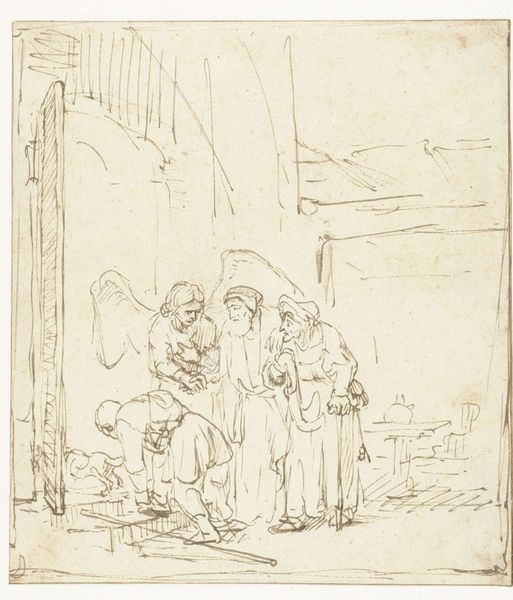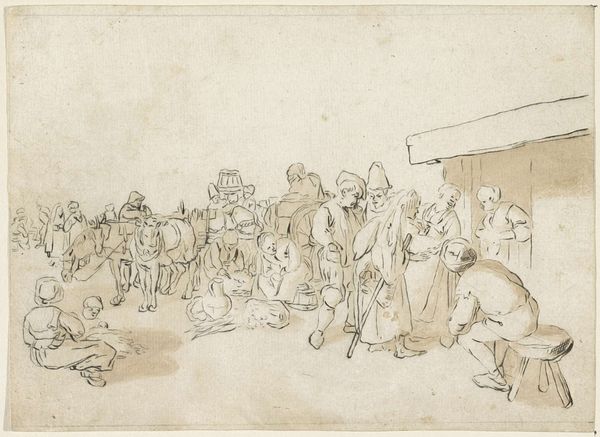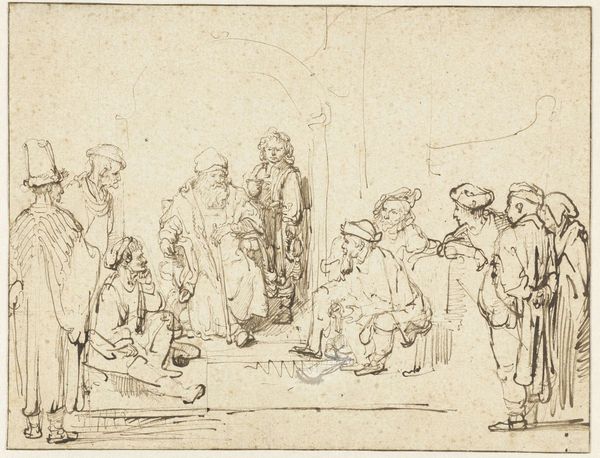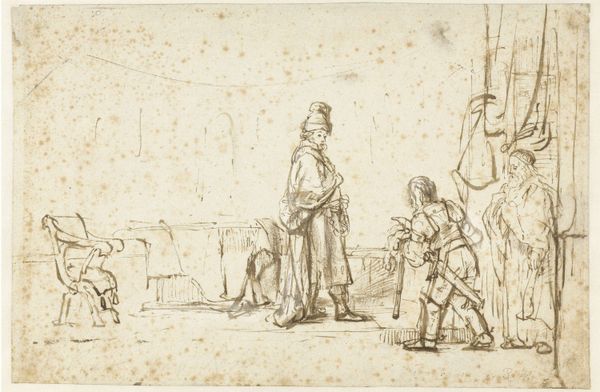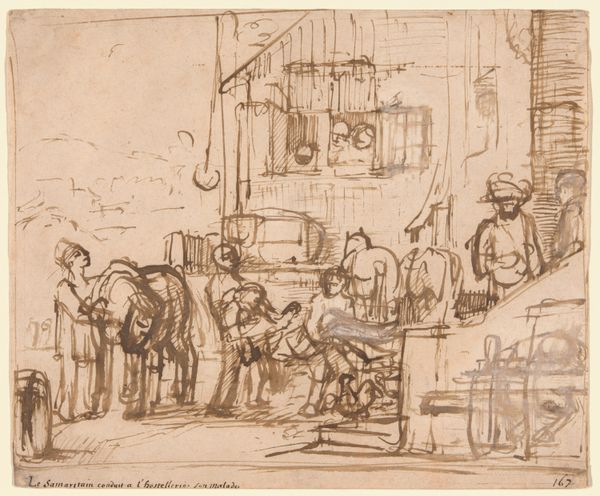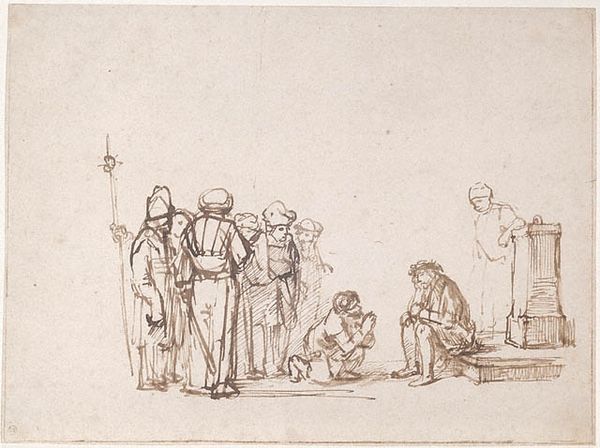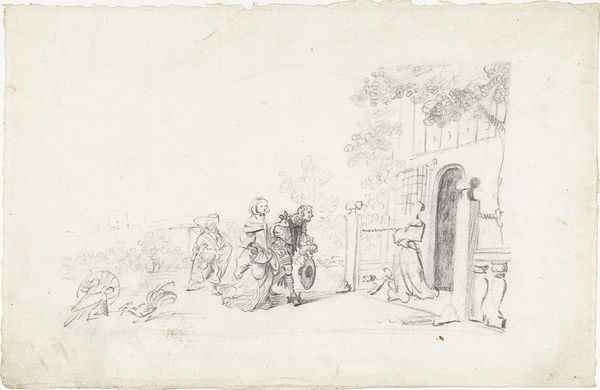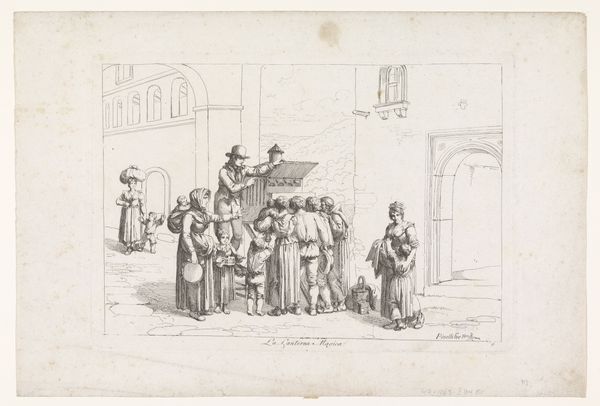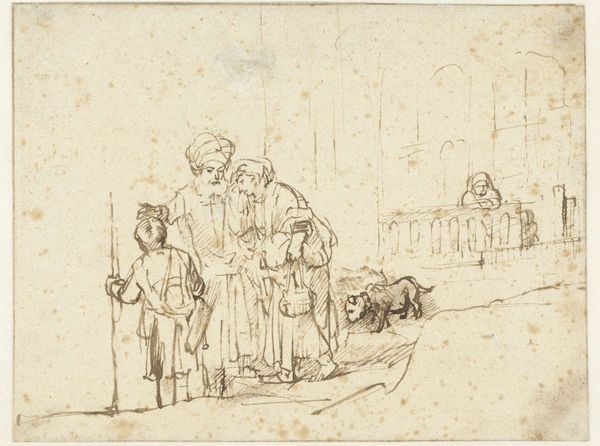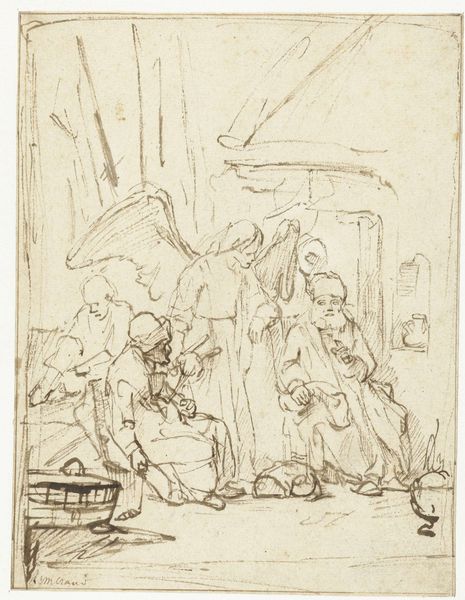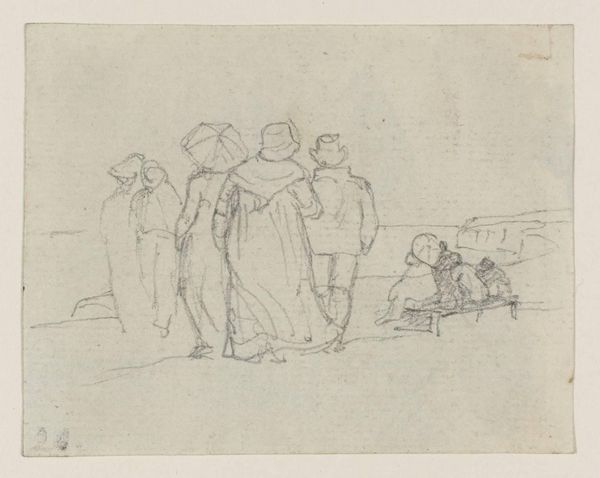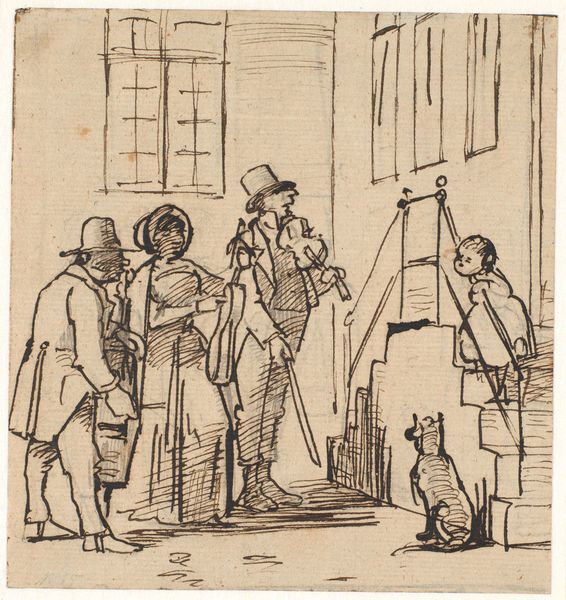
drawing, ink, pen
#
drawing
#
narrative-art
#
baroque
#
figuration
#
ink
#
pen
#
history-painting
Dimensions: height 173 mm, width 248 mm
Copyright: Rijks Museum: Open Domain
Curator: Carel van Savoyen's drawing, "Christ Presented to the People by Pilate," executed around 1650, offers us a window into the artist's interpretation of this pivotal biblical narrative. Editor: My first impression is stark—the starkness of the scene feels amplified by the minimal use of ink, it is almost as if the figures are ghosts lingering. Curator: Indeed. This piece invites reflection on the power dynamics at play. Pilate's presentation of Christ becomes a performative act, fraught with the biases and prejudices embedded in societal structures. Think about the political ramifications inherent in religious representation. Editor: I see a relationship of power but specifically as its material conditions were expressed in this piece: the scarcity of the materials creates an unfinished or immediate emotional affect to something unfolding and then being etched. The visible pen strokes communicate the quick urgency involved in production and labor here, too. Curator: Absolutely, the materiality is telling. How can we interpret Savoyen's choice to render this intense moment in such a raw, almost unfinished manner? Editor: For me it connects to its circulation within a specific economy. As a sketch done in ink with the pen—were preparatory drawings meant for more developed works or was it an exercise of style? Or, something more immediate to sell independently? Curator: Good question. Its rapid execution speaks volumes about artistic choices shaped by cultural narratives. Van Savoyen positions us, the viewers, as implicated in this drama, forcing us to confront uncomfortable truths about authority and its consequences. It's about how power can both define and destroy individuals. Editor: That interpretation allows us to then investigate how this religious subject becomes entangled with commercial viability in seventeenth-century Europe. I also see in this medium how the production also collapses distinctions between labor in the artist studio and artistic skill, each existing in separate domains. Curator: Precisely, which forces us to reflect on the lasting legacy of power relations—within and beyond this piece. The ways in which historical biases manifest continue to resonate with us today. Editor: Considering how material and production are also intertwined, perhaps Van Savoyen's ink and pen become their own quiet form of cultural commentary that complicates art, skill, labor and, especially in a drawing like this, religion.
Comments
No comments
Be the first to comment and join the conversation on the ultimate creative platform.
